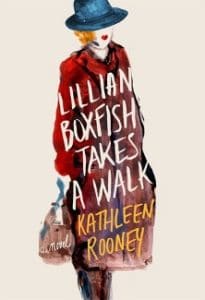A nighttime stroll on New Year’s Eve: remembering poetry, feminism and advertising in 1930s Manhattan
Author: Kathleen Rooney
 During the 1930s, a gifted young poet and brilliant ad woman named Margaret Fishback worked for R.H. Macy’s in Manhattan. She wielded her “needle-sharp couplets” to sell everything from hosiery to air conditioners. Not only did she adore her job, but during her prime she was the highest-paid female advertising copywriter in the world.
During the 1930s, a gifted young poet and brilliant ad woman named Margaret Fishback worked for R.H. Macy’s in Manhattan. She wielded her “needle-sharp couplets” to sell everything from hosiery to air conditioners. Not only did she adore her job, but during her prime she was the highest-paid female advertising copywriter in the world.
Fishback died in the mid-1980s and was long-forgotten—until author Kathleen Rooney re-discovered her, thanks to a close friend and librarian who was archiving Fishback’s papers. Rooney felt an instant connection with Fishback’s sensibility and feminism, and she decided she wanted to write a novel to bring her and the “whole forgotten generation of pre-Mad Men advertising women” to light.
The result is Lillian Boxfish Takes a Walk, and it is as singular as Margaret Fishback herself: plucky, observant, and unfailingly gracious.
Rooney notes that her book is fiction, not biography, so Lillian Boxfish is an imagined character, but she is so refreshing and fully-formed that Fishback would’ve been proud to have served as the inspiration. We meet Lillian on December 31, 1984 as she is preparing for New Year’s Eve. She puts on her mink coat and Helena Rubinstein Orange Fire lipstick (stockpiled from the 1950s before it was discontinued), and she heads out to the “dazzling but uncompassionate” streets of New York. She begins a 10.4-mile walk that winds through Manhattan and unites her, quite cleverly, with limo drivers, security guards, and bartenders. Because she is in her 80s—and for a host of other reasons I don’t want to give away—her walk is nothing short of extraordinary.
Lillian has long subscribed to the idea of solvitur ambulando (“it is solved by walking”). She has a knack for running into strangers and getting them to share beautiful, hidden nuggets of information about themselves. “I very much enjoy that MTV,” she says, “though I still find that a long walk through an unfamiliar neighborhood teaches me more about what’s new and exciting than any number of hours of television can.”
As Lillian strolls, she seeks out places in the city where long ago she lived and worked and sipped cocktails, causing her to reflect deeply on her past. Through her flashbacks, we learn what first brought Lillian to Manhattan, how she found unparalleled gratification in her career, and what followed when she got married and had a baby. The themes are weighty: friendship, family, unequal pay for women, and a reverence for the English language. “There have been so many times in my life when I found the actual world to be completely unsuitable. I have done my level best to remedy that, through poetry.”
Although Lillian Boxfish Takes a Walk has its share of solemn moments, it’s also very humorous thanks to Lillian’s disarming wit, which plays a starring role in all of her conversations and writing projects. “Being funny—it was true; that was my innovation… Mine was a voice that no one had heard speaking in an advertisement before, and I got them to listen.” Importantly, it’s not just Lillian that the reader is privileged to listen to; it’s also Margaret Fishback. Rooney was able to secure permission from Fishback’s son to include some of her real-life poems and ads within the pages, thereby adding a whole other layer of meaning and delight to the book.
Rooney is an exceedingly good writer. Her prose is buoyant and precise, she gets dialogue just right, and she never veers into the sentimental. Lillian Boxfish Takes a Walk is her second novel, and I can only hope that she has more equally divine books up her sleeve. Until then, Lillian will stick with me, along with her terrific outlook on humankind: “So many careers and fortunes are made by expecting the least and the worst of people. And yet people are rarely so disappointing. The city has taught me that.”
[AMAZONPRODUCTS asin=”1250113326″]
- Northwoods Author Amy Pease Interview and Book Recommendations - April 29, 2024
- Still True author Maggie Ginsberg:Interview and Book Recommendations - September 14, 2022
- When wood and words come together:A children’s picture book is born - June 30, 2022

